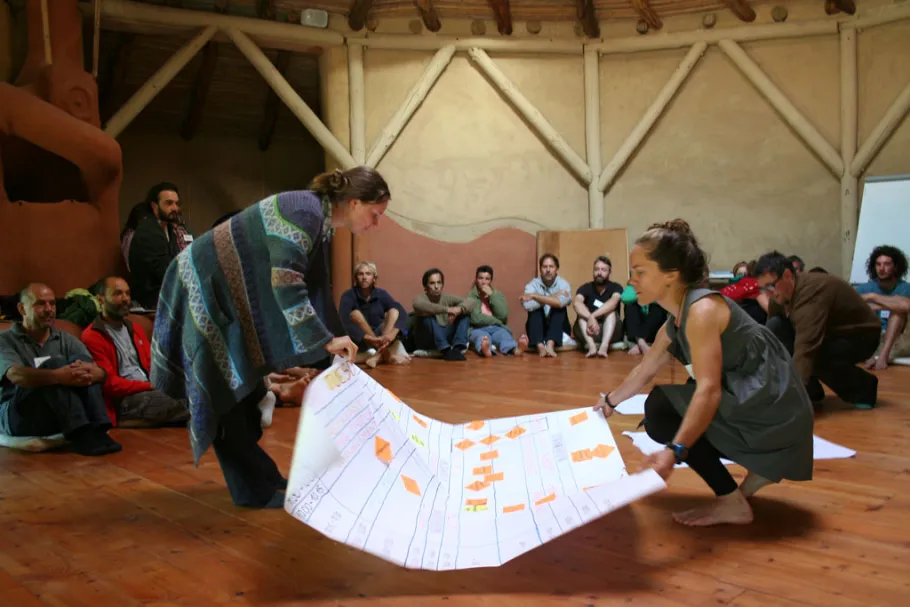
In this session, I use Open Space Technology as an inspiration to design a session about the teaching of the design principles for large groups, where some of the participants may have some prior understanding of them, and can help the others who don’t. Learning outcomes: the students have been exposed to the permaculture design principles, and have a basic understanding of each of them, so that they can explain them to other students and give real life examples of their application.
Session plan
Duration:
75 minutes up to 90 minutes
Audience:
Large groups with up to 40 or 45 people.
Materials needed:
- colour markers,
- 10 flipchart paper sheets where each of them has a permaculture design principle on it as a heading,
- a set 10 of cards explaining the PC design principles. Each card has the definition of a design principle on one side and an example of its application on the other side. This can be a picture, a drawing or a piece of text
- somewhere where to hang the flipchart sheets after their use (a wall and paper tape or a string and clothes pegs).
Instructions
First ask around how many people are already familiar with permaculture design principles then ask to form 10 groups, one for each of the design principles (I usually do it with the design principles by John Quinney* but the exercise can obviously be carried out using the 12 David Holmgren's design principles), which the participants can join. Those students already familiar with the PC design principles may help the teacher making sure everyone has understood the principles by walking to the groups and clarifying students’ doubts. Each group receives a flipchart sheet, with the name of one of the the principle as a title (or they can just write the name of the principle on it) a card with a principle, and some color markers. They are asked to doing the following:
- Discuss and understand the definition of the design principle on the card they have been given
- Discuss and understand the example given on the back of the card
- Think of other examples of application of the principle in their life experience
They are given 10 minutes to do this. During this time the teacher and the helpers visit each of the groups making sure the principles and the examples are understood and/or answering questions. After this time has passed, one person in each group remains in charge of the sheet of paper and the rest can join other groups to learn about some of the other principles, discuss more examples, etc. for 10 more minutes. After this , each group will be given a maximum of 5 minutes so that one representative can explain their understanding of the principle and the examples found, to the rest of the class, for a total of 50 more minutes. The teacher fills the gaps or presents more examples. Eventually (or right after each principle has been explained) each of the posters are hung on the wall for the rest of the course so that they can be consulted whenever necessary.
- Log in to post comments
